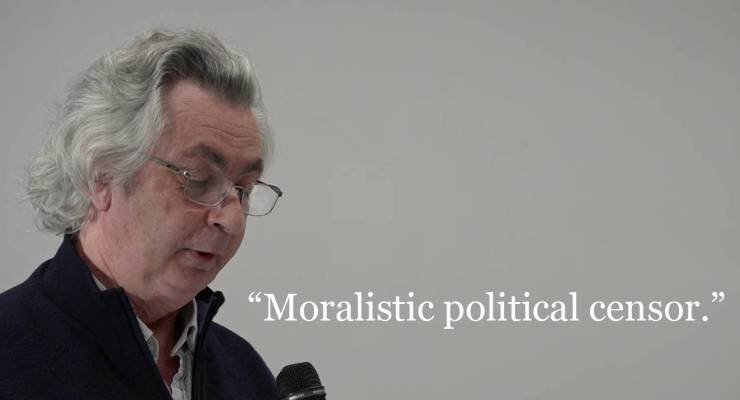
How does The Australian inflict damage on its enemies? There are four main weapons, say media academics Matthew Ricketson and Andrew Dodd: “First, it unleashes a torrent of articles contesting even of the tiniest points, so as to wipe the critic’s original point from everyone’s mind; second, it attacks the critic personally and pitilessly; third — somewhat paradoxically — it ignores the critic; and fourth, when all else fails, it simply continues asserting something as true as if no one has ever shown it was false.”
The paper’s Holy Wars are quasi-military campaigns: strategic, tactical and psychological. They are unrelenting and take no prisoners. Here’s how it works:
Constant bombardment: The first, and most important rule of a Holy War is quantity. It doesn’t matter how small the original transgression, nor does it matter if there’s no update to report: the story must be kept alive.
Paparazzi images: If there’s nothing fresh to say in articles (which there often isn’t), fresh pictures will keep it alive. A story about Paul Barry’s biases against News Corp earns a pap shot of him with a coffee outside the ABC offices in Sydney. Another story about Gillian Triggs’ attacks on free speech gets her papped her on the streets of Sydney. Gotcha!
Quote friendly “talking heads”: There’s always someone who will go hostile against the target, like an editor or reporter from within News Corp or a friend of the paper (Senator Eric Abetz is always available for a supportive ideological comment). When Matthew Ricketson became the journalists’ union delegate on the Press Council, the assault against him was almost entirely made up of comments from within News Corp (including investigative reporter Hedley Thomas, editor-in-chief Chris Mitchell, Geelong Advertiser editor Liam Houlihan).
Remain vigilant: To maintain a Holy War, surveillance on a target is needed at all times, in all places. For example, when Roz Ward was the paper’s enemy number one, she posted on her personal Facebook page calling the Australian flag racist. This fueled 16 articles over 12 days — 8798 words — and she was suspended (later reinstated) from her university job. Gillian Triggs gave a speech in the Blue Mountains and the national broadsheet covered it. She spoke at an event in Hobart for a foundation run by former Greens leader Bob Brown … The Australian was there, too. Yassmin Abdel-Magied addressed 60 school children at Sydney Writers’ Festival, and The Australian covered it. Paul Barry did a pub talk and, you guessed it, The Australian reported it.
The paper’s holy wars are quasi-military campaigns: strategic, tactical and psychological. They are unrelenting and take no prisoners.
Apply disparaging epithets: Gillian Triggs is “controversial” and “a disaster”; Larissa Behrendt is an “urban elite”; Tim Flannery is an “alarmist” and a “campaigner”; Roz Ward is a “hardline Marxist” and “LGBTI activist”; Robert Manne is a “moralistic political censor”.
Co-opt opinion attack dogs: Regular antagonists on the opinion page are unleashed on victims with regularity. These barking columnists include political commentator Chris Kenny, Gerard “sourpuss” Henderson, tutorialist Janet Albrechtsen, resident old hounds Henry Ergas and Terry McCrann and of course Greg (“I warn the tsar”) Sheridan. Fulminating or nasty editorials are another part of The Australian‘s musty furniture, the paper’s infantile Cut and Paste column is a daily forum for snide remarks and out-of-context quotes and, before his death, cartoonist Bill Leak was part of the pincer movement in almost any campaign du jour.
TOMORROW: The war against Tim Flannery







Crikey is committed to hosting lively discussions. Help us keep the conversation useful, interesting and welcoming. We aim to publish comments quickly in the interest of promoting robust conversation, but we’re a small team and we deploy filters to protect against legal risk. Occasionally your comment may be held up while we review, but we’re working as fast as we can to keep the conversation rolling.
The Crikey comment section is members-only content. Please subscribe to leave a comment.
The Crikey comment section is members-only content. Please login to leave a comment.